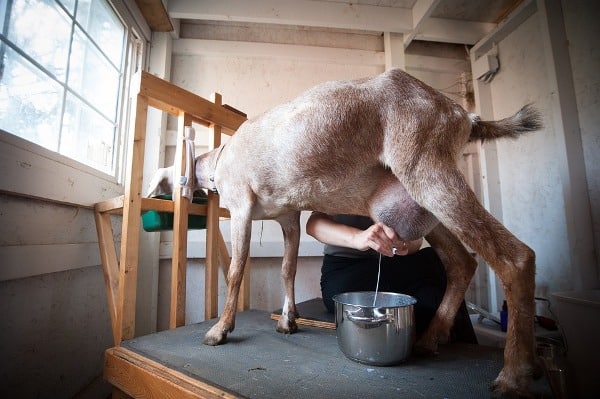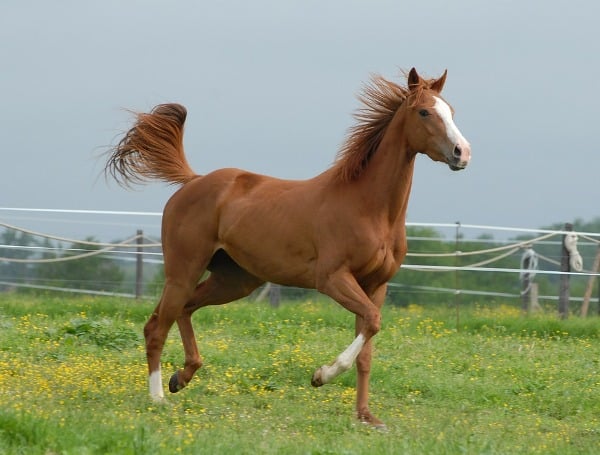The gestation period of farm animals/livestock
Today, we talk about the gestation period of farm animals.
The gestation period is the time interval between the conception time and parturition, that is, the period between the development of a fetus in mature female farm animal and reproduction; this is also called the period of pregnancy. The gestation period is the time interval between the fertilization of an egg and the birth of the young. The duration of the gestation period of animals will differ markedly between different species of animal.
Generally, there are two main factors that give to the length of the gestation period:
Animal size or mass – larger animals tend to have longer gestation periods (as they tend to make larger offspring).
The level of development at birth – more developed infants will typically need a longer gestation period.
The gestation period of farm animals is different for every animal; some farm animals have a short gestation period while other farm animals have a long gestation period. The information about the gestation period of farm animals is very crucial as it enables farmers to plan adequately, aids productive decision making and allows the development of the business.
After successful copulation, fertilization happens and the fetus develops. The fetus develops regularly and transforms fully into a replica or kin of the animal within a stipulated period. This period is known as the gestation period. Parturition, the proceeds of giving birth in farm animal, marks the end of the gestation period. Within this period, farmers are expected to carry out a few practices to aid parturition. One of these is the preparation of the pen so as to create the new animal comfortable and aid growth.
Aside from the pre-parturition practices the knowledge of gestation period aids, it helps farmers decide, know when to expand and the expected yield or stock per year. Some animals can reproduce more than three times in a year, while others are just once; knowledge of the gestation period helps greatly in planning and decision making to develop the productivity of the farm.
The shortest gestation is that of the Virginian opossum, about 12 days, and the longest gestation that of the Indian elephant, about 22 months.
A list of the gestation period of farm animals is;
Cow
Cows are one of the most regular farm animals around the world. A baby cow is known as a calf. A female calf is called a heifer calf and a male a bull calf. A heifer or female calf is a female that has not had any offspring. The size and weight of a cow are highly dependent on the type of breed. Mature males weigh 450 to 1,800 kg (1,000–4,000 pounds) and females weigh 360 to 1,100 kg (800–2,400 pounds).
The gestation period of cow ranges from 279 to 287 days. For most breeds, 283 days would be very common. Cows carrying bull calves tend to have a somewhat longer gestation compared to cows carrying heifer calves. Also, a cow can reproduce once in a year, not like other farm animals that can reproduce twice or three times and above in a year.
Buffalo
India is the first country in the world for a number of buffaloes or water buffaloes and milk production about 134 million tons. Buffalo are great members of the Bovidae family. The water buffalo is the very largest bovine. The water buffalo is 8 to 9 feet from head to rump with its tail adding an extra 2 to 3.3 feet. They weigh a massive 1,500 lbs to 2,650 lbs. (700 to 1,200 kilograms). The African buffalo is very small, but they are still quite impressive in size.
The gestation period of water buffalo is longer than that of cows which is between 281 to 334 days. Murray buffalo’s gestation period is around 315 days and Swamp buffalo’s gestation period is around 330 days. The American Bison’s gestation period is around 283 days.
Read: Dairy Buffalo Project Report for 10 Animals.
Sheep
Sheep are a farm animal with thick curly hair that eats grass. Domestic sheep vary from their wild relatives and ancestors in some respects, having become uniquely neotenic as a result of selective breeding by humans. A few primitive breeds of sheep retain some of the characteristics of their wild cousins, such as small tails. Most horned breeds have a single pair, but a few breeds can have several. Depending on the breed, sheep varies a range of heights and weights. Their rate of growth and mature weight is a heritable trait that is selected for inbreeding. Ewes normally weigh between 100 and 220 lbs, and rams between 45 and 160 kilograms (100 and 350 lbs).
The average gestation period for sheep is approximately 147 days, varies from 144 to 152 days. Sheep can reproduce twice in a year.
Goats
Goats are wonderful animals. Goats are tough and versatile and have more uses than you can ever imagine. Goats could survive and thrive just about anywhere. A goat is a hoofed mammal in the type ‘Capra’. Most goats are known to as domestic goats which are sub-species of the ‘wild goat. The normal birth rate for goats is 2.2 kids per year.
Baby goats are standing and their first steps taking within minutes of being born. Mountain goats can weigh from 125 lbs to 180 lbs. (57 to 82 kilograms) and grow from 49 inches to 70 inches (124 to 178 centimeters) long. Their black horns grow up to 8 inches to 12 inches (20 to 30 cm) long.
The gestation period for goats is generally varied from 148 to 152 days with an average of 150 days.

Rabbit
Rabbits are small, mammals with long ears, short fluffy tails, and strong, large hind legs. They have two pairs of sharp incisors (front teeth), one pair on top and one pair on the bottom. They also have two peg teeth behind the top incisors. Their teeth are specially adapted for gnawing and grow continuously throughout their lives.
Rabbits differ in color and size, ranging in weight from 2 to 16 pounds (1 to 7 kilograms), depending on breed. Pet rabbits that have been well taken care of and spayed or neutered early in life have a life expectancy of 8 years to 12 years.
The gestation period of a rabbit is approximately 31 days. Rabbit has the shortest gestation period of one month or less. Rabbits are prolific animals. They can reproduce up to 10 times a year.
Horse
The horses are one of two extant subspecies of Equus ferus. Depending on the breed, management, and the environment, the modern domestic horse has a life expectancy of 25 years to 30 years.
The height of the horses is measured at the highest point of the withers, the neck meets the back. This point is used since it is a stable point of the anatomy, unlike the head or neck, which moves up and down in relation to the body of the horse. The size of horses varies by breed but is influenced by nutrition.
The gestation period for horses is generally from 330 to 342 days with an average of 336 days.

Pig
Pigs are very similar to the human body. Pigs have a large head, cone-shaped snout, small eyes, long ears, a short neck, small legs, and a big body. Pigs have very tough skin and they can have hair, depending on species. The largest pigs can weigh from 660 lb to 700 lb.
The gestation period for pig is generally from 112 to 120 days.
Read: Model Pig Farming Project Report.
Camel
The camel is a very large, humpbacked mammal, and the first animal domesticated by man in prehistoric times. A Bactrian camel, according to the San Diego Zoo, grows to a shoulder height of 6 feet (1.8 meters) and a body length of 10 feet or 3 meters. They generally weigh 1,320 to 2,200 lbs. (600 to 1,000 kg) when they are fully grown. Dromedary camels get up to about 6.5 feet or 2 meters tall at the shoulder and weigh 880 to 1,325 lbs. (400 to 600 kg).
The gestation period for camel is generally from 360 to 420 days with an average of 390 days.
Donkey
Donkeys also called as asses or burros, have long been a companion and work animals for humans. Donkeys are often labeled with their sizes, which range from less than three feet tall to over 14 hands. A hand, a unit of measurement equaling 4 inches, normally serves to measure the height of horses and other equines from the ground to the highest point of the shoulders, called the withers.
Size classifications consist of miniature, standard, large standard and mammoth stock. Miniatures are 36 inches to 48 inches high. Standards are 36 inches to 48 inches tall. Large standards are 48 inches to 54 inches for jennets or 56 inches for jacks. Mammoth jennets are 54 inches or above; mammoth jacks are 56 inches or taller.
The average gestation period for the donkey is approximately 365 days.
Read: NFT hydroponics System Building Guide.
Very informative thank you for the info
Please help me with an updates in rearing of pigs and other farm animals
Thanks
Very specific information
Thanks